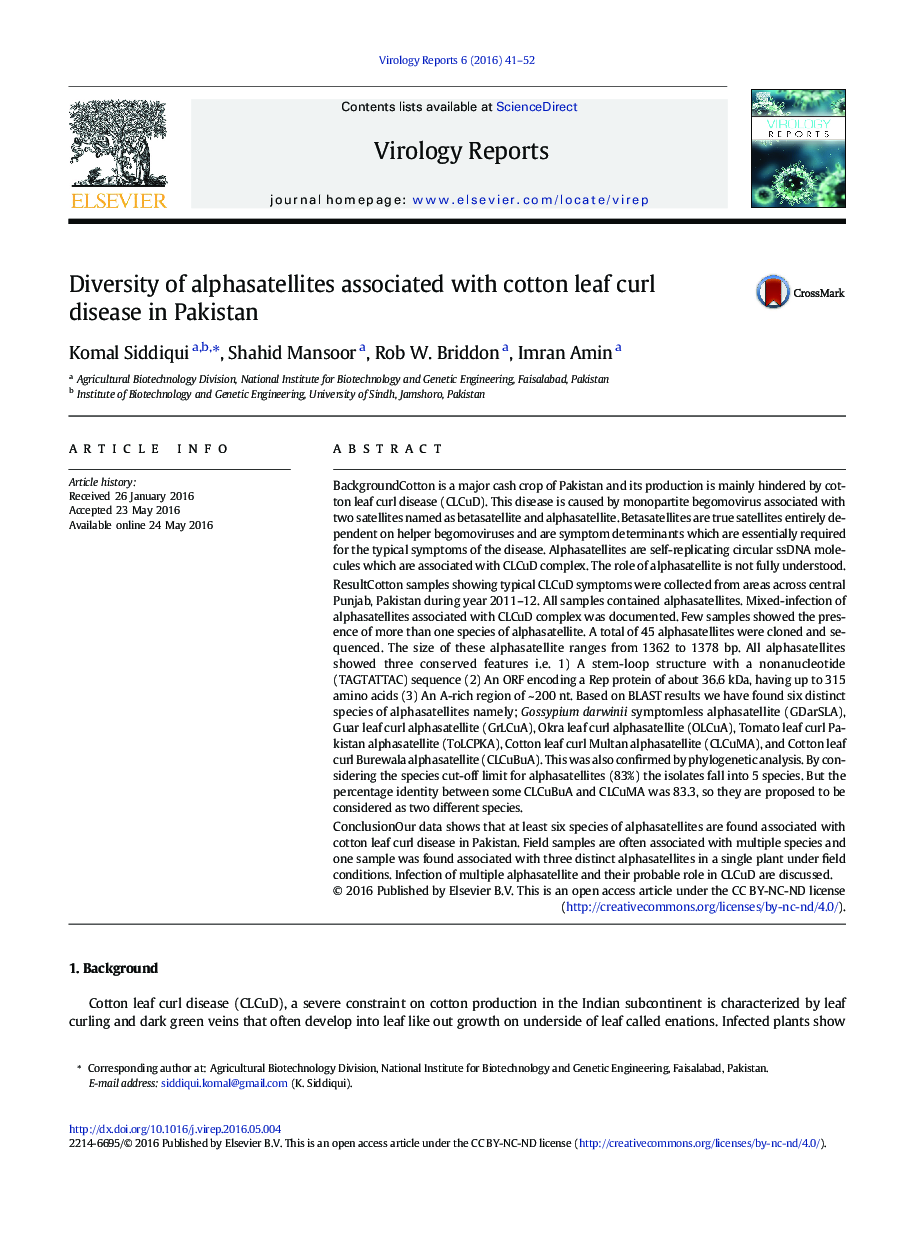| Article ID | Journal | Published Year | Pages | File Type |
|---|---|---|---|---|
| 2205393 | Virology Reports | 2016 | 12 Pages |
BackgroundCotton is a major cash crop of Pakistan and its production is mainly hindered by cotton leaf curl disease (CLCuD). This disease is caused by monopartite begomovirus associated with two satellites named as betasatellite and alphasatellite. Betasatellites are true satellites entirely dependent on helper begomoviruses and are symptom determinants which are essentially required for the typical symptoms of the disease. Alphasatellites are self-replicating circular ssDNA molecules which are associated with CLCuD complex. The role of alphasatellite is not fully understood.ResultCotton samples showing typical CLCuD symptoms were collected from areas across central Punjab, Pakistan during year 2011–12. All samples contained alphasatellites. Mixed-infection of alphasatellites associated with CLCuD complex was documented. Few samples showed the presence of more than one species of alphasatellite. A total of 45 alphasatellites were cloned and sequenced. The size of these alphasatellite ranges from 1362 to 1378 bp. All alphasatellites showed three conserved features i.e. 1) A stem-loop structure with a nonanucleotide (TAGTATTAC) sequence (2) An ORF encoding a Rep protein of about 36.6 kDa, having up to 315 amino acids (3) An A-rich region of ~ 200 nt. Based on BLAST results we have found six distinct species of alphasatellites namely; Gossypium darwinii symptomless alphasatellite (GDarSLA), Guar leaf curl alphasatellite (GrLCuA), Okra leaf curl alphasatellite (OLCuA), Tomato leaf curl Pakistan alphasatellite (ToLCPKA), Cotton leaf curl Multan alphasatellite (CLCuMA), and Cotton leaf curl Burewala alphasatellite (CLCuBuA). This was also confirmed by phylogenetic analysis. By considering the species cut-off limit for alphasatellites (83%) the isolates fall into 5 species. But the percentage identity between some CLCuBuA and CLCuMA was 83.3, so they are proposed to be considered as two different species.ConclusionOur data shows that at least six species of alphasatellites are found associated with cotton leaf curl disease in Pakistan. Field samples are often associated with multiple species and one sample was found associated with three distinct alphasatellites in a single plant under field conditions. Infection of multiple alphasatellite and their probable role in CLCuD are discussed.
